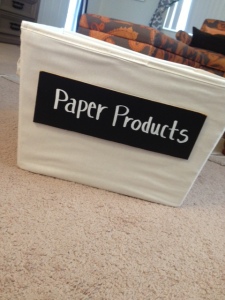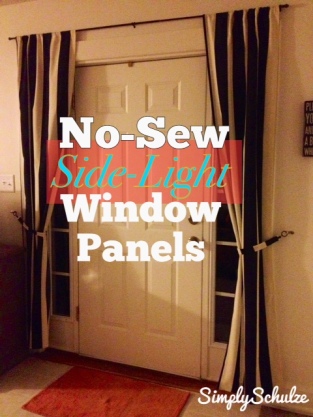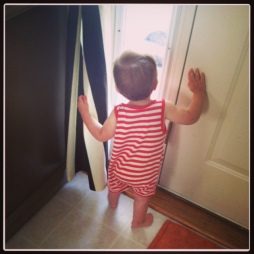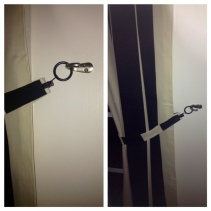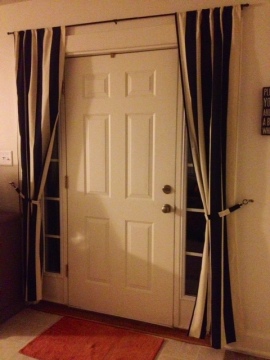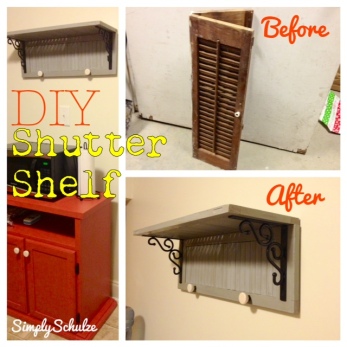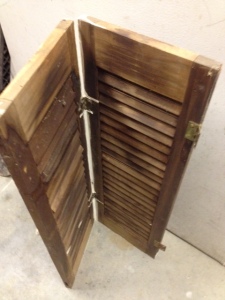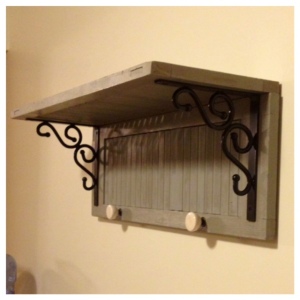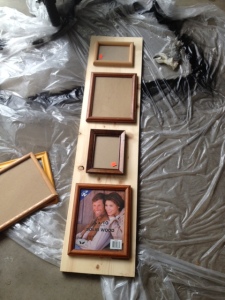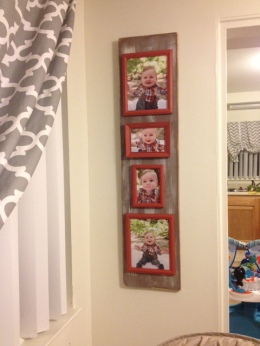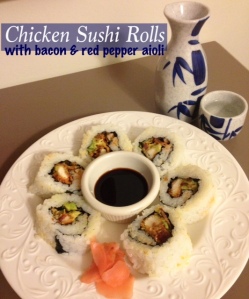Please forgive that my past few posts are all related to the laundry room/command center that I am yet to post about (I promise to do so soon!), but it just so happens that a lot of my DIY projects as of late have been part of that particular little room makeover. This little sign I made as decor for our little family command center, emphasis on “little” since I didn’t have much space to work with, this cutsie little sign was the perfect thing to jazz it up. Another reason I am so excited about this little sign is because it was my first attempt at a hand painted sign using this particular method (printing out the wording and using painters tape cut with an X-acto knife to create a stencil). Additionally this project was my guinea pig for what will be two larger painted decorative signs that I am now planning to get to work on in the next few weeks given that this one came out so well! So if you’re like me and love the idea of DIYing something that fetches a fortune on Etsy (like hand painted signs!), give this one a try, all you need is wood, some painter’s tape and a steady hand. I also want to add that my inspiration for this project was both my glass etchings (see tutorial here which is generally the same idea only with glass and etching cream as opposed to wood and paint) and my friend Courtney of Wildly Domestic’s tutorial for her growth chart ruler in which she uses this same technique for stenciling and painting the ruler! If you’re skeptical about your ability to pull this one off give it a try anyway by practicing on some scrap wood, just be careful with that X-acto knife, I wouldn’t want my project to be the reason for any DIY-induced ER trips :-P.
DIY HAND PAINTED SIGN
WHAT I USED:
- 1 small wooden plaque – normally I would just use scrap wood or cheap lumber from Lowes, however, my laziness got the best of me when I saw this little pre-cut plaque at Michael’s for only $2.99 that fit the space perfectly and already had a decorative edge.
- chalk paint – you need not use chalk paint, that is just what I had left over from my previous projects and the color was right for the space. Any latex or even acrylic paint will do. Check out my post on using homemade chalk paint here. For this particular piece I used “Stone Mason Gray” by Valspar, read about my love for sample size paints here!
- white paint – for distressing the wood. If you do not plan to dry-brush the wood for a distressed look you can skip the white paint altogether. I just used latex trim paint we had lying around from our work on the Honey Tree house.
- acrylic paint – I used acrylic paint for the wording but latex paint will do as well if you have some lying around in your desired wording color, it will just take a little longer to dry than if you were to use acrylic.
- sanding blocks or sandpaper
- foam brushes, for painting
- regular paint brush, for dry-brushing
- small paintbrush, for wording
- clear topcoat – I used this Krylon Matte Spray Finish purchased at Walmart for about $3.00, since I had it leftover from my DIY Painted Plastic Planters (post coming soon!)
- painter’s tape
- scotch tape (or any clear tape)
- X-acto knife
INSTRUCTIONS:
Step 1: I began by preparing and painting my piece of wood. For a more detailed description of how I dry-brushed and distressed the wood check out my DIY Rustic Picture Display to see the step-by-step instructions on a larger piece. For the purposes of this post I’ll give a more concise version – first I sanded down the wood surface quickly so as to remove any roughness or scratches, then I painted the wood piece with a coat of chalk paint (you may need more than one depending on your paint color, I only used one). Once the coat of chalk paint had dried, I dry-brushed the surface using a regular 2″ paint brush (see above mentioned post for detailed instructions) and once that had dried I sanded down the edges and a bit on the surface to give the wood a distressed look and wiped it clean with a dry rag.
Step 2: Once my wood was prepped, I used painter’s tape to cover the surface of my wood. Then I simply created a document in Word of my wording in my chosen font and printed it out. I cut each of the words out individually and used scotch tape (any clear tape will do) to secure them onto the painter’s tape by covering the entire surface of the words with clear scotch tape.
Step 3: I used an X-acto knife to carefully cut out each of the words. This is pretty tedious but goes much faster if you have some SVU re-runs on in the background :).
Step 4: Once you’ve cut out all of your words use your smaller paint brush to paint the wording onto wood inside of your makeshift stencil. As soon as you have finished painting all of your words carefully remove the painter’s tape from the wood (I gave mine a few minutes to dry before removing the paint but didn’t wait too long because I didn’t want any of the edges to glob up against the painter’s tape and dry in weird pattern).
Step 5: As soon as your piece has dried apply your top coat and you are finished! If you like the way your piece looks sans topcoat this is fine too since your sign will most likely be mounted on a wall indoors, there isn’t much need for added protection to the wood.









